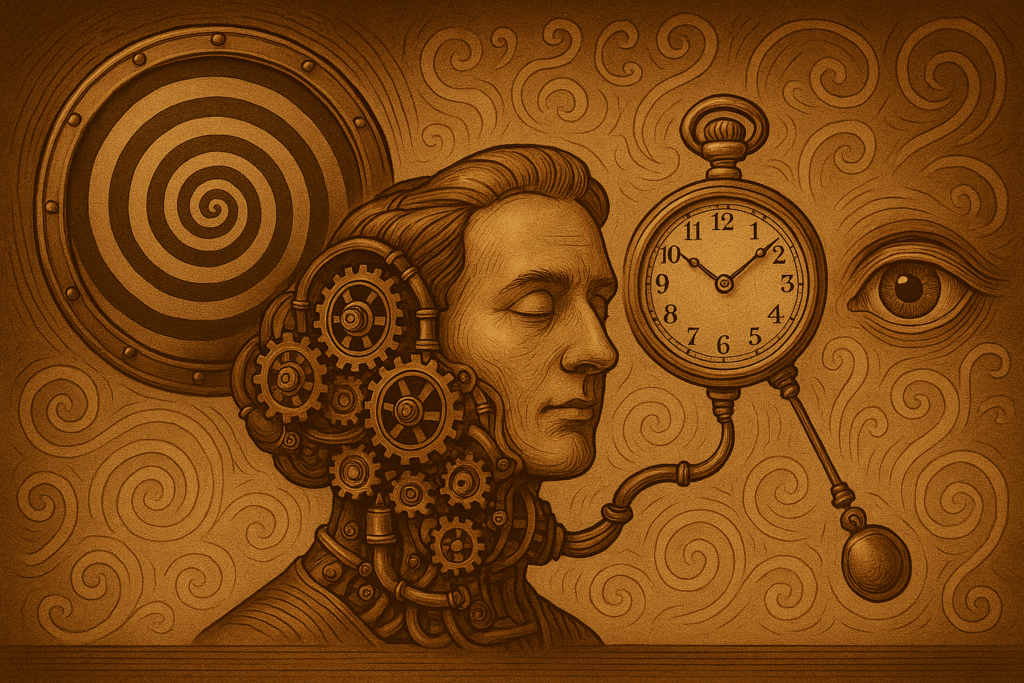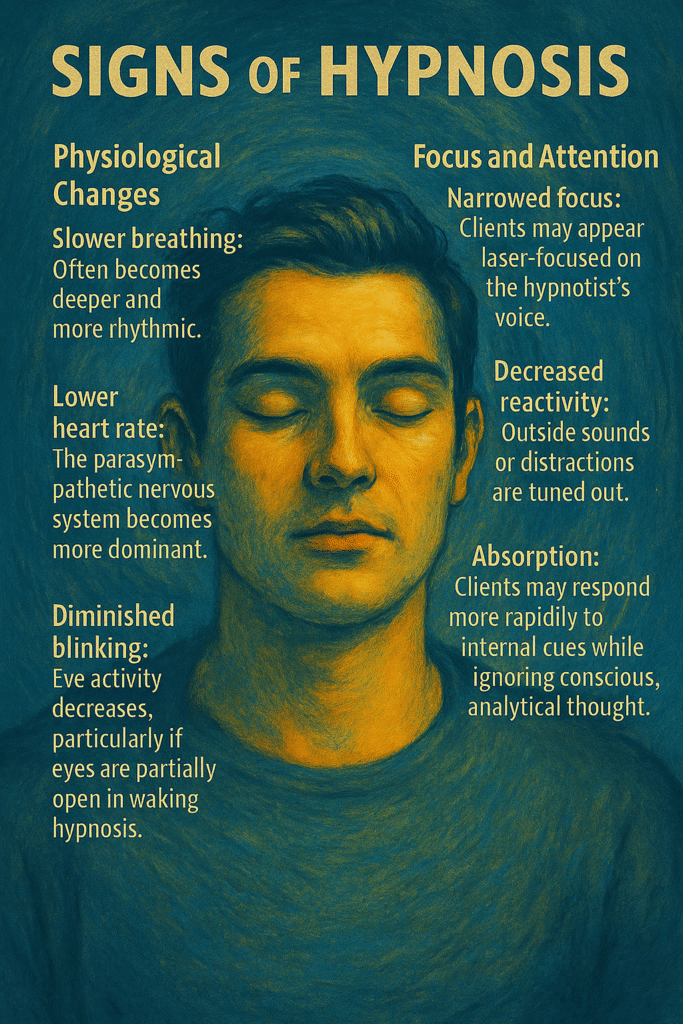
Signs
Of
Hypnosis
Signs You’re Experiencing Hypnosis
Understanding how hypnosis works begins with recognizing what it looks and feels like. Whether you’re new to the process or deepening your practice, identifying the signs of trance can validate your experience and help you reach deeper levels over time.
The signs of hypnosis fall into two main categories: observable physical signs and internal subjective experiences. While no two individuals will experience hypnosis exactly the same way, even one of these signs can indicate that the subconscious mind is beginning to engage.
For a more in-depth overview of the hypnotic process, visit How Hypnosis Works.
Observable Signs of Hypnosis
These signs are typically noticed by the hypnotist, but they can also be recognized by clients or observers. They reflect changes in muscle tone, breathing, and physiological responsiveness that often accompany altered states of awareness.
Physical Relaxation
-
Muscular relaxation: Muscles may appear softened or limp.
-
Facial smoothing: The face often appears serene or “ironed out,” especially around the eyes and mouth.
-
Stillness: Even individuals who typically fidget or have tics may become very still.
-
Eye signs: Eyelids may flutter or roll upward, particularly during deepening phases.
-
Slower reflexes: The swallowing reflex may reduce; reaction times typically slow.
-
Color changes: A flush in the face or changes in skin tone may occur due to relaxation of blood vessels.


What Does Hypnosis Feel Like?
Clients often ask: “What will it feel like?” Hypnosis can feel different from one person to the next, and it can vary depending on the depth of trance. What’s most important is not the feeling itself, but the quality of focus and openness to change that results.
Common Subjective Experiences
Mental and physical relaxation: A sense of stillness and peace.
Floating or sinking sensations: A lightness or heaviness in the limbs or entire body.
Time distortion: Time may seem to pass faster or slower than normal.
Increased imagination: Mental imagery becomes more vivid and immersive.
Detachment: Thoughts, worries, or even pain may feel more distant.
Heightened awareness: You remain conscious and aware, but your focus narrows.
Ego quieting: A decrease in critical or analytical self-talk.
Emotional calm: Feelings of peace, comfort, and stability.
Many people compare hypnosis to the moment just before falling asleep, or the focused state you experience while reading or watching an engaging movie. These internal signs align with the alpha and theta brainwave activity identified in EEG studies of hypnosis .
For more insight into the scientific brain states involved, visit How Hypnosis Works.
Why Recognizing These Signs Matters
By understanding the observable and subjective signs of hypnosis, you can:
Know when you’re entering trance
Increase your ability to reach deeper states over time
Feel more confident in the process of change
Whether you’re looking to manage stress, overcome anxiety, break a habit, or enhance performance, recognizing your body’s signals in trance helps you use hypnosis more effectively.
Additional Resources
For more related topics, explore:
References
-
Deeley, Q., Oakley, D. A., Toone, B., Bell, V., Walsh, E., Marquand, A. F., … & Halligan, P. W. (2012). The functional anatomy of suggested limb paralysis. Cortex, 48(8), 1091–1103.
-
Spiegel, D., & Raz, A. (2009). Hypnosis and neuroscience: a tale of two paradigms. American Journal of Clinical Hypnosis, 52(2), 129–148.
-
Jensen, M. P., & Patterson, D. R. (2014). Hypnotic approaches for chronic pain management: Clinical implications of recent research findings. American Psychologist, 69(2), 167–177.
-
Gruzelier, J. (2006). EEG-neurofeedback for optimizing performance. III: A review of methodological and theoretical considerations. Neuroscience & Biobehavioral Reviews, 30(6), 1043–1055.
